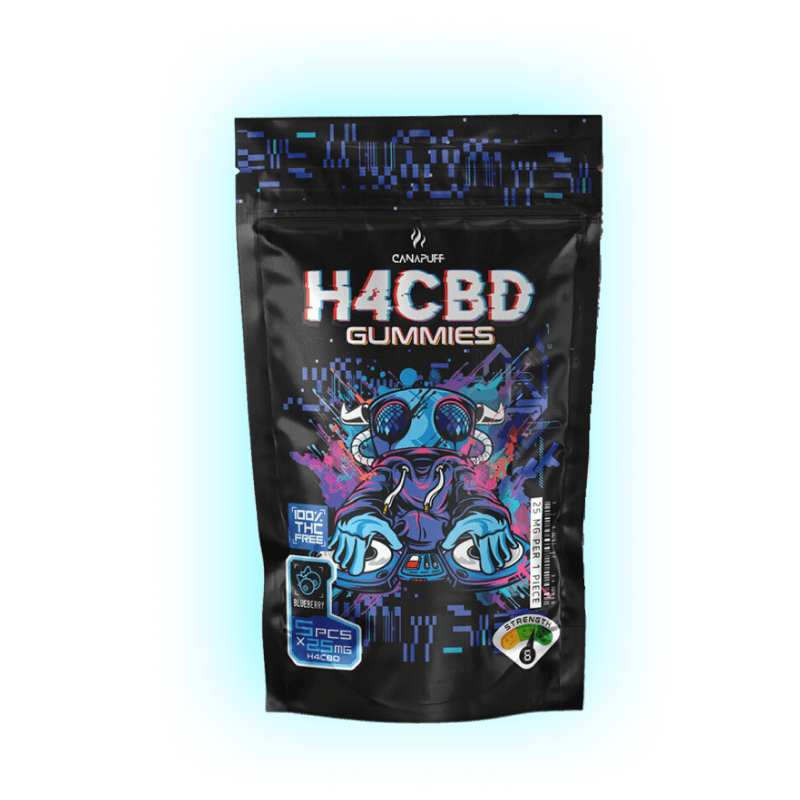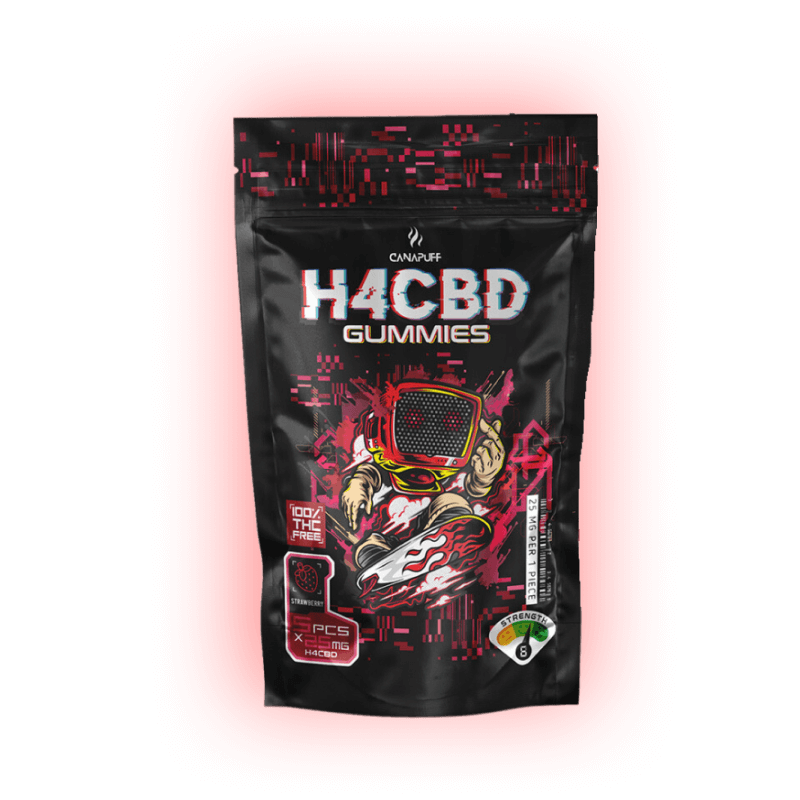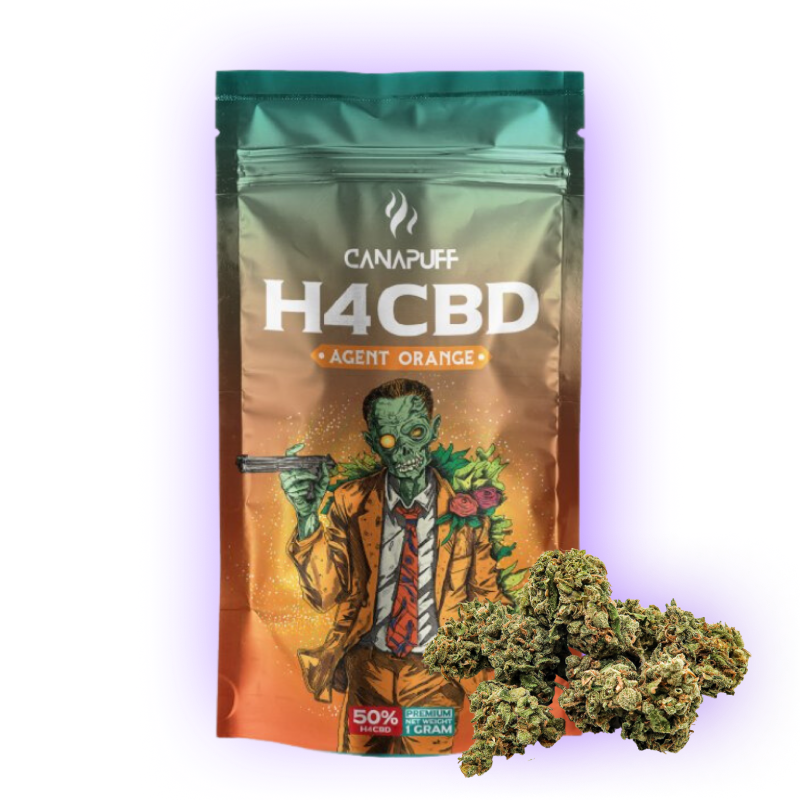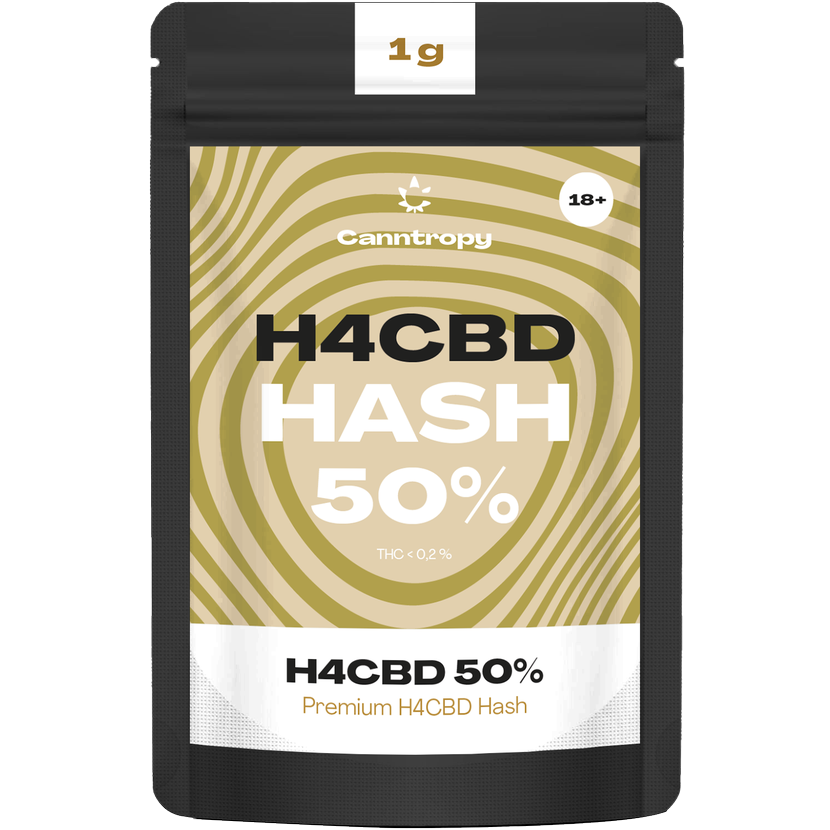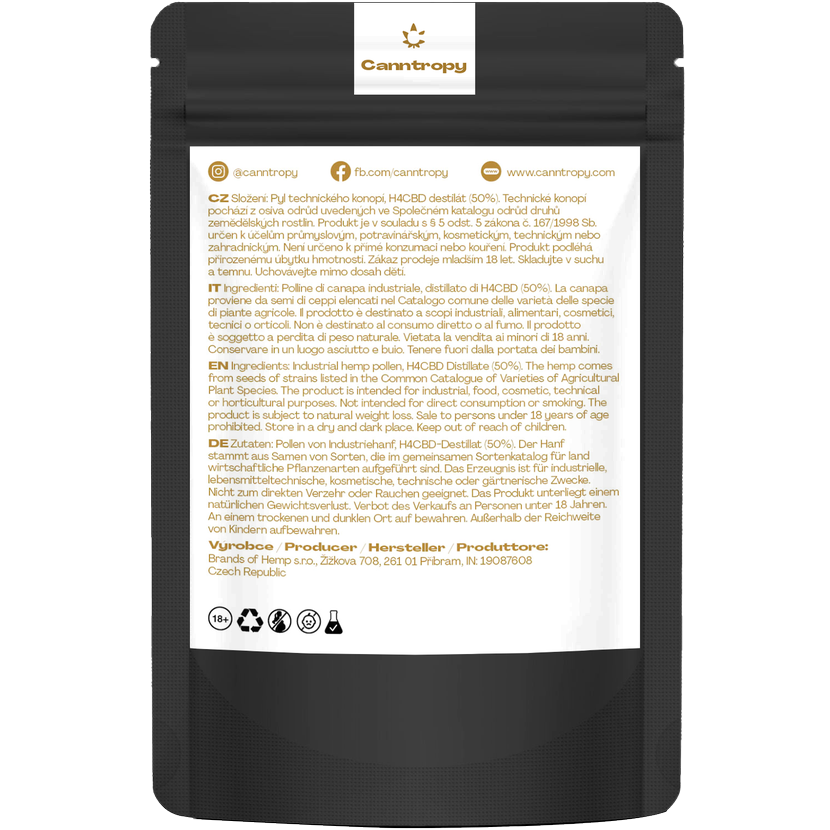What exactly is H4CBD?
It is a fascinating cannabinoid with a unique origin. Cannabinoids can be divided into two main categories:
Endocannabinoids, which our bodies produce naturally, and phytocannabinoids, which can be derived from the cannabis plant or produced synthetically.
While the most well-known phytocannabinoids are THC and CBD, H4CBD is also gaining increasing recognition. These cannabinoids exert their effects through the endocannabinoid system, a complex network of receptors present throughout the body, including the brain.
H4CBD is a very new cannabinoid and not much is known about it. Much of the information about it is based on personal experience and there is no guarantee that the described effects, side effects and dangers always apply. We want to keep you well informed so that you don't fall for false or misleading statements.
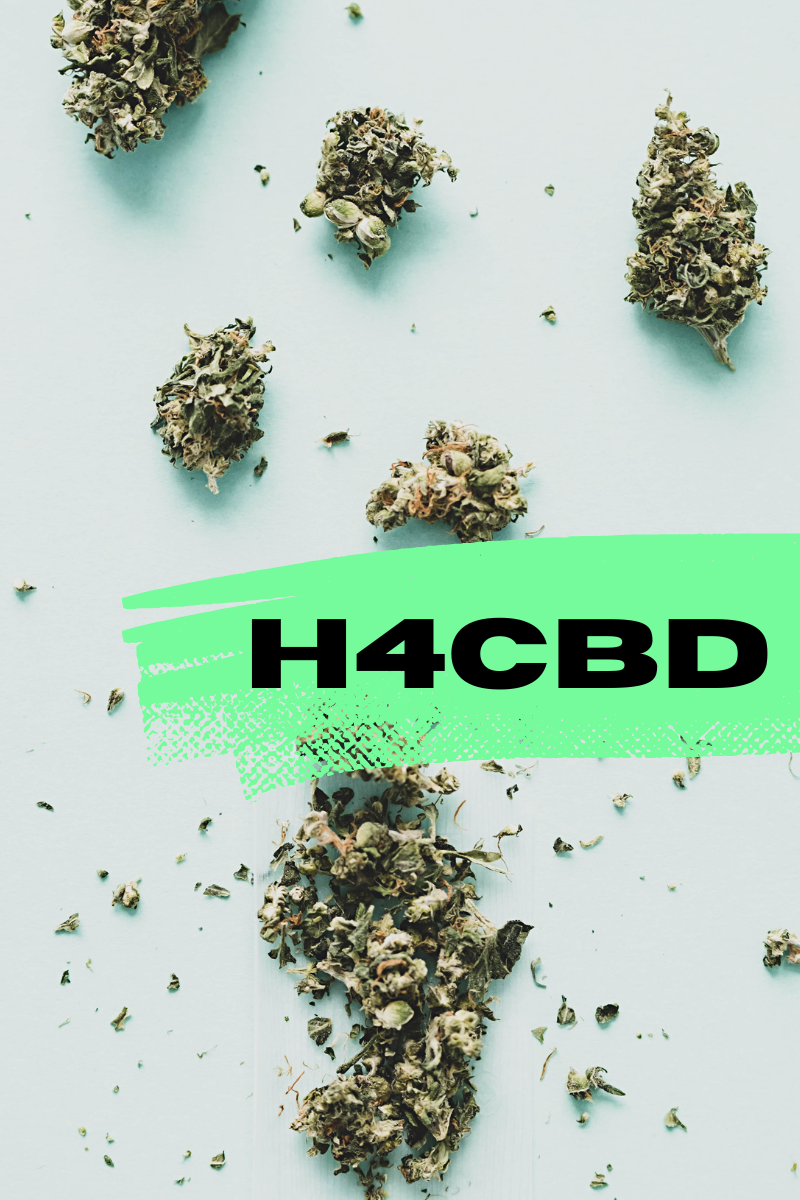
H4CBD: A unique cannabinoid with potential
H4CBD is a remarkable deviation. It is neither a natural component of our bodies like the endocannabinoids, nor does it come directly from the cannabis plant like the phytocannabinoids. It is also different from the purely synthetic cannabinoids that can occur in illegal herbal blends. Rather, H4CBD is a derivative of the well-known cannabidiol (CBD), which is produced using semi-synthetic processes. This gives it a unique chemical structure and possibly specific properties.
The exact mode of action and potential effects are the subject of ongoing research and studies. Although it may have similarities to CBD, it is important to emphasize that further research is needed to understand its specific effects on the human body. If you are considering using products containing H4CBD, we recommend doing so in consultation with a healthcare professional and opting for high-quality products from trusted sources.
What are the advantages
It is a cannabinoid found in cannabis products and offers a variety of benefits. It interacts with the endocannabinoid system in the body and has a similar effect to CBD (cannabidiol).
- It can inhibit and relieve inflammation
- relieve pain and contribute to overall health by reducing cell damage caused by free radicals
- help you fall asleep
- Have a muscle relaxing effect
One of the great benefits of H4CBD is its antioxidant effect. It helps to reduce cell damage caused by free radicals and can therefore help to prevent disease. It is also considered an anti-inflammatory agent and can provide relief from inflammatory conditions such as arthritis.


Is H4CBD detectable?
There are currently no specific drug tests for H4CBD or its degradation products. However, it cannot be ruled out that metabolization produces degradation products similar to THC, which can be detected by certain tests.
It is therefore not advisable to trust that it is undetectable, especially when it comes to your driver's license.
What is known about the effects of H4CBD?
The consistency of the study results with the perception of users is difficult to answer, as the effect on CB1 receptors is subjective. Some may hardly feel any effect, while others may experience psychotic states.
Research results indicate that H4CBD acts about 100 times stronger on CB1 receptors than CBD, as a study from 2006 and one from 2017 show. A slightly psychoactive effect is therefore likely. Nevertheless, a CBD-like effect predominates, which makes sense as H4CBD is a hydrogenated form of CBD and has structural similarities.

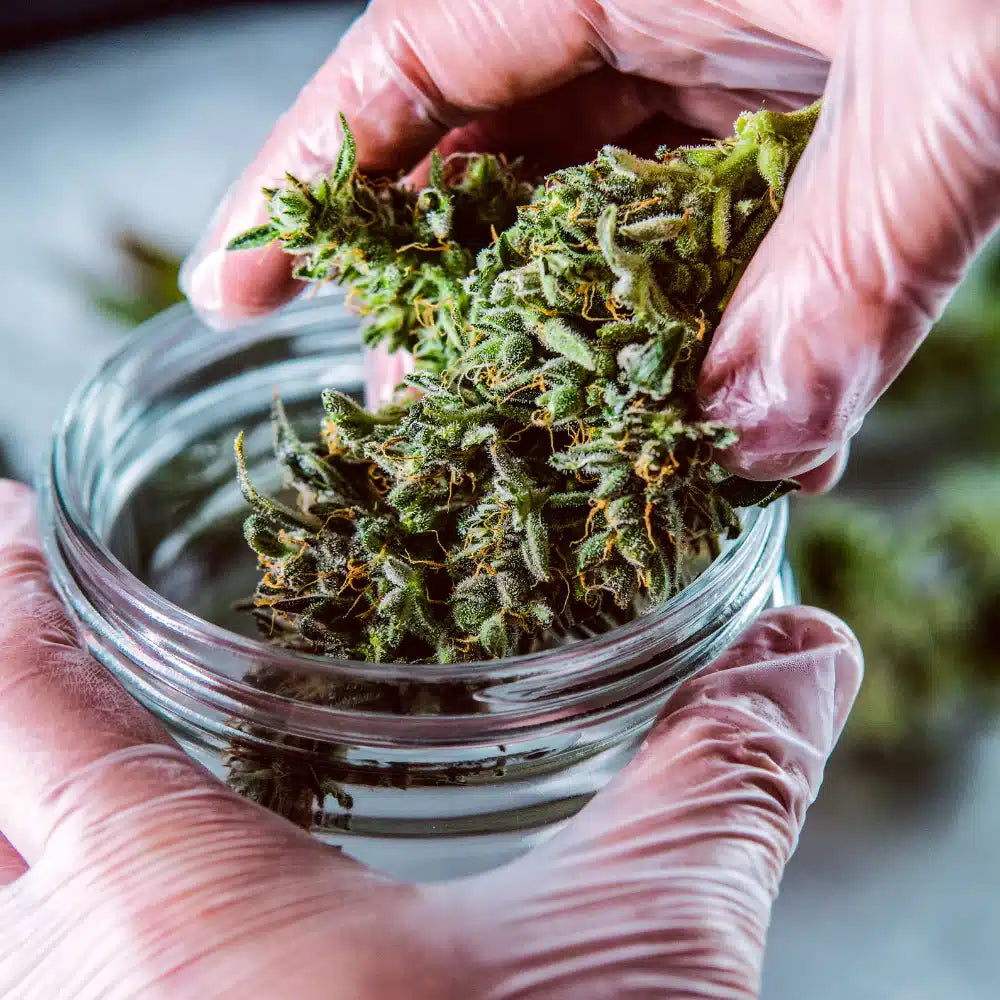
How does h4cbd differ from other cannabinoids?
It is an artificial cannabinoid that was first synthesized by the Todd group in the 1940s. It is produced by the catalytic hydrogenation of cannabidiol (CBD) and is also known as H2-CBD and 8,9-dihydrocannabidiol. Unlike CBD, h4cbd binds more strongly to the cannabinoid receptors in your body, which could potentially lead to a more intense effect.
h4cbd vs hhc
HHC (hexahydrocannabinol) and H4CBD are both innovative cannabinoids that are gaining in popularity. While HHC is known for its strong psychoactive effects, H4CBD offers a milder, relaxing experience that is often described as calming. H4CBD is a hydrogenated form of CBD and aims to enhance the benefits of CBD without the intense effects of HHC. Both offer unique benefits, and the choice depends on individual needs and preferences.
Order high-quality H4CBD and enjoy the unique taste and feeling experience!
- Fast shipping from Germany ✓
- Cash purchase or prepayment ✓
- Made in the EU ✓
- Discreet & legally secure purchase ✓
- Neutral packaging ✓
- Free shipping from 59 € ✓
- +500 articles ✓
- Many reviews on Trustpilot ✓
- Happy & satisfied customer base ✓
FAQs
It's not always easy to find quality H4CBD products these days, as the market is flooded with offers. However, you've come to the right place! Our wide range of premium H4CBD products is sure to meet your needs. If you're on the fence, take a look at our compiled sets. Our trial sets and packages are designed to make your decision easier. Check out the quality of our products for yourself and enjoy our first-class service!
When assessing the quality of H4CBD flowers, some important characteristics should be taken into account. This information is also relevant to the quality of the CBD. Here are some pointers:Organic: Make sure the product is organically grown to ensure it is free from harmful pesticides or chemicals.High CBD content: A good H4CBD flower should be high in CBD and low in THC. THC can have psychoactive effects and cause unwanted side effects.Aromatic smell: The buds should have a pleasant smell that indicates their quality.Dense and sticky consistency: High quality H4CBD buds should be dense and sticky as this indicates a high trichome content and good quality.Pleasant colour: Make sure the buds have a pleasant colour and are free from mould and bugs.By considering these characteristics, you can ensure that you are getting high quality H4CBD buds. Find out about the quality of the CBD to make an informed decision.
The extraction of H4CBD starts with the extraction of CBD from hemp plants. Subsequently, the CBD is subjected to hydrogenation, whereby it is brought into contact with hydrogen to trigger a chemical reaction, more precisely by hydrogenating CBD (cannabidiol). During hydrogenation, hydrogen is added to reduce the double bonds in the molecular structure of CBD and convert it into H4CBD. This gives the cannabinoid its special properties and a higher potency compared to CBD.
.The exact functionality of H4CBD, also known as 4-oxo-CBD, is not yet fully researched and understood. It is a semi-synthetic cannabinoid derived from cannabidiol (CBD). Although it may share similarities with CBD, the chemical changes involved in producing H4CBD could result in unique properties.
Cannabinoids, including H4CBD, work by interacting with the endocannabinoid system. This system consists of cannabinoid receptors found throughout the body, including the brain, as well as the endocannabinoids that the body produces itself. The interaction between cannabinoids and the receptors can influence various physiological processes, including mood, pain sensation, appetite, inflammatory responses and more.
H4CBD may act on the receptors in the endocannabinoid system in a similar way to other cannabinoids by modulating their activity. This could have implications for various aspects of health and wellbeing. However, it is important to emphasize that further research is needed to understand the specific functionality of H4CBD in detail.
If you are looking for more information about how H4CBD works, I recommend that you consult the most current scientific literature and research on the topic.
Es gibt noch nicht viele Studien über die spezifische Wirkung von H4CBD im Vergleich zu CBD. Da H4CBD ein halb-synthetisches Cannabinoid ist und möglicherweise eine leicht unterschiedliche chemische Struktur aufweist als CBD, könnten sich auch die Wirkungen unterscheiden. Es wird angenommen das es stäker wirkt. Allerdings ist die Forschung zu H4CBD noch relativ begrenzt, und es ist schwer vorherzusagen, wie es sich im Vergleich zu CBD verhält.
CBD (Cannabidiol) ist eines der am besten erforschten Cannabinoide und wird mit verschiedenen potenziellen gesundheitlichen Vorteilen in Verbindung gebracht. Es wird oft für seine beruhigende Wirkung und sein Potenzial zur Linderung von Angstzuständen, Stress, Schmerzen und Entzündungen verwendet, ohne dabei die psychoaktiven Effekte von THC (Tetrahydrocannabinol) zu verursachen.
Wenn es um H4CBD geht, gibt es bisher nur begrenzte Studien und Daten, um seine Wirkungen zu charakterisieren. Es ist daher schwierig zu sagen, welches der beiden - H4CBD oder CBD - stärker wirkt oder welche spezifischen Unterschiede in ihren Wirkungen auftreten könnten.
Wenn Sie sich für den Einsatz von H4CBD interessieren, empfehle ich Ihnen dringend, auf aktuelle Forschungsergebnisse und Informationen von zuverlässigen wissenschaftlichen Quellen und Experten zurückzugreifen. Bei gesundheitlichen Bedenken oder Fragen ist es immer ratsam, sich an einen medizinischen Fachmann zu wenden, der auf dem neuesten Stand der Forschung ist und individuelle Ratschläge geben kann.
No, it is a partially synthetic cannabinoid. It is created by modifying CBD molecules by introducing four hydrogen atoms. In contrast, CBD is extracted from natural sources such as hemp plants.












